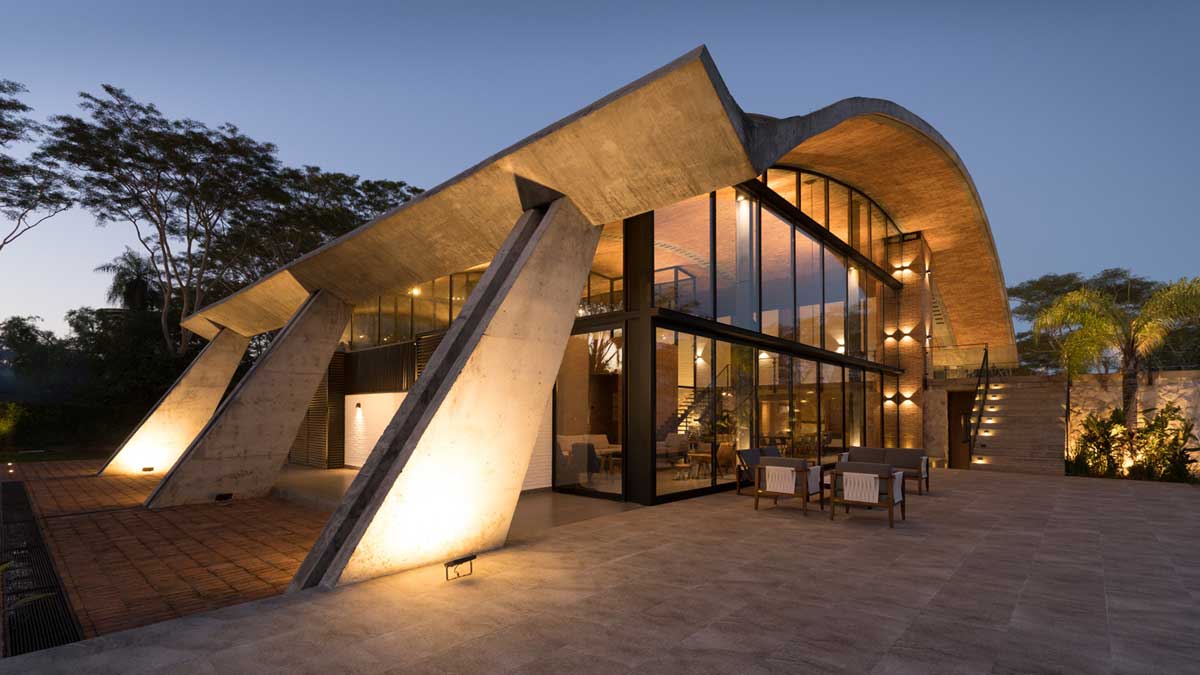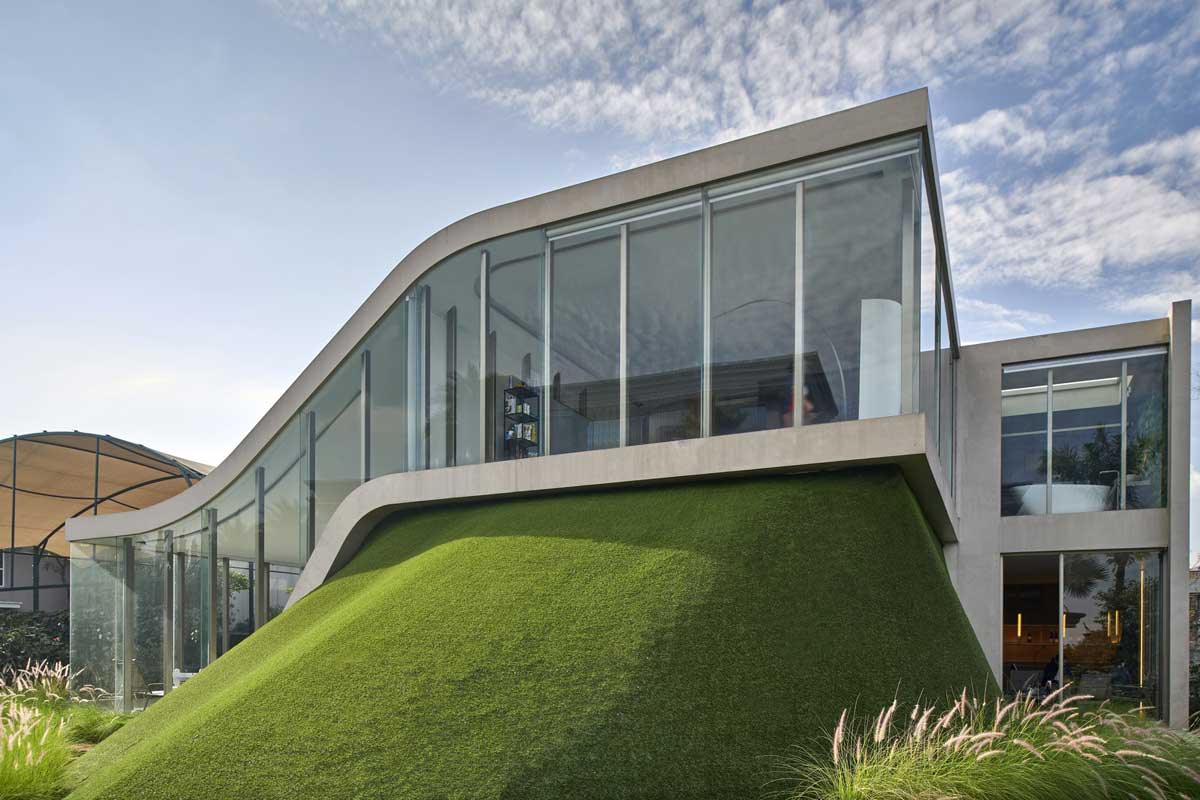In the heart of Mariano Roque Alonso, Paraguay, stands a residence that beautifully marries the past with the present. This home, with its use of colonial bricks and a distinctive curved roof, showcases how traditional materials can be reimagined in contemporary designs, creating structures that are both aesthetically pleasing and functionally robust.






| Architects | http://www.arkstudio.pt |
| Images |
The Charm of Colonial Bricks
Colonial bricks, with their rich history and timeless appeal, have always been a favorite among architects and designers. In this residence, they take center stage, lending texture and character to the structure. These bricks, with their rustic finish, add a touch of nostalgia, transporting one back to an era where craftsmanship was paramount.
Beyond aesthetics, colonial bricks offer functional benefits. Their dense composition provides excellent thermal insulation, ensuring that the interiors remain comfortable throughout the year. This natural insulation property reduces the need for artificial heating or cooling, making the home energy-efficient.
The bricks also play a role in enhancing the home’s acoustics. Their porous nature absorbs sound, reducing noise pollution and creating a serene indoor environment. This acoustic property is especially beneficial in urban settings, where external noise can be a concern.
Furthermore, colonial bricks are sustainable. They are made from natural materials and do not undergo intensive processing, making them eco-friendly. Their durability ensures that they stand the test of time, reducing the need for frequent repairs or replacements.
Lastly, the use of colonial bricks in the formwork adds depth to the design. The bricks, with their uneven finish, create shadows and highlights, adding dynamism to the structure and making it visually captivating.






The Elegance of Curved Roofs
The curved roof of the residence is its defining feature. It’s not just an architectural statement but a functional marvel. The curve, devoid of intermediate structures, relies on underground cables for support, eliminating the need for internal pillars and creating open, unobstructed spaces.
This innovative design ensures optimal rainwater harvesting. The roof’s curve channels rainwater to the concrete pillars, which then direct it to a cistern. This harvested rainwater is reused for irrigating the land, making the home water-efficient.
The curved roof also plays a role in optimizing natural light. Its design, coupled with strategically placed windows, ensures that the interiors are bathed in a warm, natural glow throughout the day. This not only enhances the ambiance but also reduces the reliance on artificial lighting.
In terms of thermal comfort, the curved roof excels. Its design, combined with the insulating properties of the colonial bricks, ensures that the interiors remain comfortable, irrespective of external weather conditions.
In essence, the curved roof, with its modern design and functional benefits, complements the traditional charm of the colonial bricks, creating a home that’s both beautiful and efficient.




Merging History with Modernity
The residence’s design is a beautiful juxtaposition of history and modernity. While the colonial bricks harken back to a bygone era, the curved roof is decidedly contemporary. This blend creates a unique aesthetic, where the old and the new coexist in harmony.
The bricks, with their rustic charm, serve as a reminder of the rich architectural heritage of Paraguay. They tell a story of craftsmanship, of artisans who molded each brick by hand, infusing them with character. In the residence, these bricks are not just building materials; they are storytellers, narrating tales of the past.
The curved roof, on the other hand, is a nod to the future. Its innovative design, devoid of intermediate supports, showcases the advancements in architectural engineering. It’s a symbol of progress, of pushing boundaries and redefining norms.
Together, the bricks and the roof create a dialogue between the past and the present. They showcase how design can bridge the gap between history and modernity, creating spaces that are both nostalgic and forward-looking.



Sustainability at the Forefront
In today’s world, where sustainability is paramount, the residence stands out for its eco-friendly design. The use of colonial bricks, made from natural materials, reduces the home’s carbon footprint. Their insulating properties ensure energy efficiency, reducing the reliance on artificial heating or cooling.
The curved roof, with its rainwater harvesting capabilities, further enhances the home’s green credentials. By reusing rainwater for irrigation, the residence reduces its water consumption, ensuring its sustainability in the long run.
Furthermore, the strategic orientation of the home protects it from the harsh sun, reducing the need for air conditioning. The large windows, coupled with the curved roof, optimize natural light, further reducing energy consumption.
In essence, the residence is not just a design marvel; it’s a beacon of sustainability. It showcases how homes can be beautiful, functional, and kind to the planet.

The residence in Mariano Roque Alonso is more than just a home; it’s a statement. It stands as a testament to the power of design, of how traditional materials like colonial bricks can be reimagined in contemporary settings. It’s a story of history, innovation, and sustainability, setting a benchmark for homes of the future.






